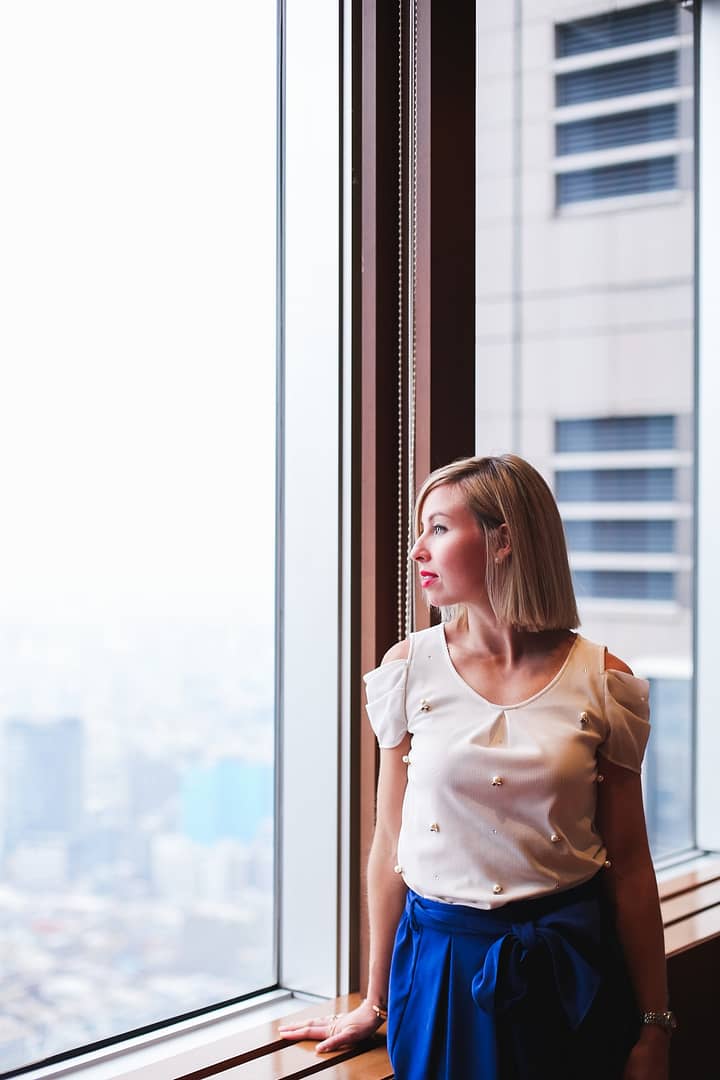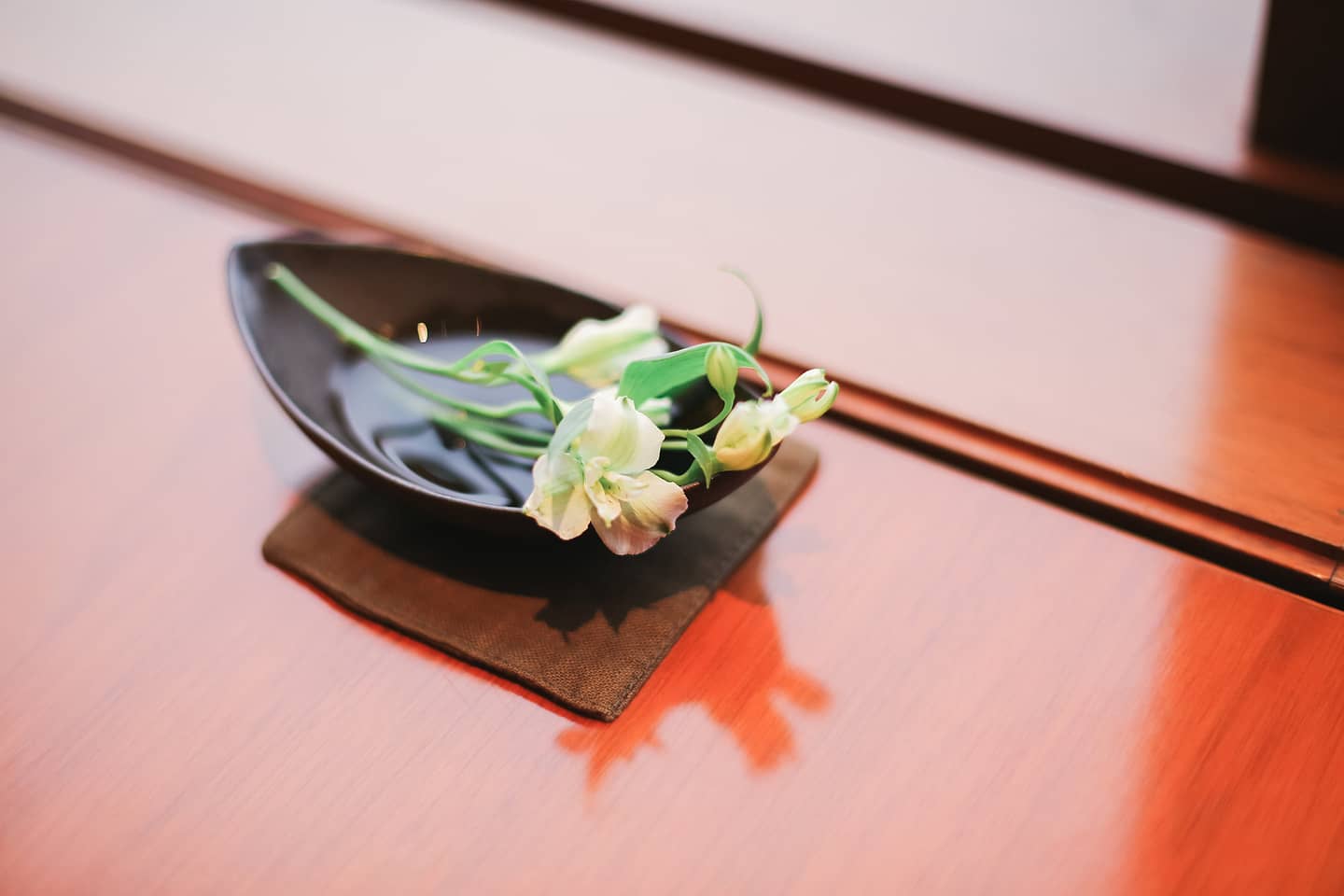Robots, sex shops and skyscrapers. This is Shinjuku, the quintessence of modernity. Walking through its crowded alleyways, under rain and blazing neon lights, one might feel like an extra in the movie Blade Runner. Or so that’s how I feel when dropping in on this complex, electric world.

I return to Tokyo once a year for my dose of all-things-Japanese. Like some perennial monster returning to feed on takoyaki and green tea sweets, coming back to Tokyo has become an essential milestone in my calendar year.
Yet on this most recent visit, I was craving a taste of tradition that is somewhat harder to come by in the city. I wanted to feel the serenity of wandering the empty streets of Shibu Onsen in a kimono, or the calm of a historic tea ceremony in Kyoto. Finding tradition in the heart of Tokyo, especially Shinjuku, felt like an impossible task.

After a night out at the Robot Restaurant, I was bound and determined to find its antithesis. The concierge at the Park Hyatt Tokyo suggested kaiseki, a traditional multi-course dining experience. It seemed like a viable entry point into the complex world of high end Japanese dining. After all, I was travelling with my parents and wanted them to experience a taste of that tradition which pulls me back to this country like a magnet year after year.

He made us a reservation at Kozue, the Park Hyatt Tokyo‘s famed kaiseki restaurant. What ensued might be the most memorable culinary experiences of my life.
The Experience
When we arrived, we were led through the immaculate two-story restaurant into a private wood-panelled room (koshitsu). Built with the same eye for detail as the rest of the hotel, Kozue possesses a grand elegance somewhat uncommon in a city dominated by tiny hole-in-the-wall restaurants.
After we were seated, our hostess arrived wearing a traditional kimono. This is when time began to melt. I wasn’t in Blade Runner anymore. Nor was I overcome with the roar of trains or burning lights. There was no music in this room, no unnecessary sound. No robots either. It was a welcome respite for the manic streets of Shinjuku below.

But First, Sake
I’ve been told that no kaiseki experience is complete without a glass of sake. But after a lively night at the New York Bar upstairs, I must admit I didn’t haven’t much desire for it. Though when the porcelain cups arrived, arranged delicately on ice for me to choose, I changed my mind. I selected a nice bottle of Junmai Ginjo sake. Hair of the dog seemed like the best approach.

I learned shortly thereafter that the cups, and all the porcelain dishes used for this meal, were hand picked from Head Chef Kenichiro Ooe’s private collection. The renowned chef has been the head of Kozue since the day it opened in 1994. Prior to coming to the Park Hyatt Tokyo, he honed his skills at Kagaya in Akasaka, Shikitei in Kodaira and was Chef de Cuisine at Ginza Koyou. With a reputation for being one of the most skilled kaiseki chefs in Japan, I knew we were in capable hands.
Culinary Brilliance
What came next was an endless procession of the most beautifully prepared food I’d ever experienced. Intricately arranged on each plate with care and intention, it was a visual feast first and foremost. Once I mustered up the courage to disrupt the arrangement, my senses came alive. The butterfish melted in my mouth. The tempura was cooked to perfection. Each item in my ten-piece iwai-sakana set piqued my senses.

Equally impressed were my parents. My mom, with a rather sensitive palate, enjoyed the subtle flavours of her soba. My dad had the most visually (and aurally) lively dish of them all – the shabu-shabu. The best part about kaiseki is the variety. Hot, cold, more ingredients than I could count. Chef Ooe offers a menu that spans a range of culinary pleasures. From traditional country-style dishes to an innovative interpretation of kaiseki. Here I was, finally getting my dose of traditional Japan.

Awakening the Senses
Every dish tantalized my senses. Vibrant colours struck my eyes, subtle smells hit my nose. Even my ears savoured the crackling of the coal and simmering of wagu beef on the grill. Then it all made sense to me why this private room was so quiet – the silence was the conduit for other sensory experiences. Adding any unnecessary sound, such as music, would have robbed us of the richness of this culinary journey.

Our hostess was like a conductor allowing this orchestra of senses to come alive. She moved with careful precision through that space, as if aware that even the sound of her clogs on the carpet had a presence. The delivery of each course unfolded like a well rehearsed procession. I could tell she’d done this many times before. No fumbling of dishes, no jarring movements. Every step was essential, like a ballet of necessity.

I cannot be sure how much time passed. In the silence of that room, we feasted on the most artfully crafted delicacies known to mankind. I felt humbled by it, as though I wasn’t equipped to experience it to the same depth as a culinary expert could. In the way a fine wine is best appreciated by a sommelier, I felt ashamed that I didn’t possess the knowledge to experience it the way a connoisseur might. Nor the culinary vocabulary to articulate what I’d been given.
I guess I need to spend more time in Tokyo restaurants to hone this skill.


Approachable Kaiseki
While kaiseki can be intimidating for newbies, Kozue provides a setting in which inexperienced patrons (like myself) can partake in this timeless tradition. And with many English speaking staff on hand, I had no concerns about their abilities to accommodate my mother’s barrage of allergies, something more difficult at smaller Tokyo restaurants.

Centuries of skill, cannot be understood over one meal, but they can certainly be appreciated. In the pursuit of unami, I would say Chef Ooe is very close, if not already there at his destination.
Defining Moment
Perhaps my favourite moment came when the hostess explained to us the concept of Kintsugi.

Kintsugi is the practice of repairing broken ceramics with gold, silver or platinum. Rather than throwing away the broken item, owners often wait over a year to have it mended, knowing the process usually results in something more beautiful than the original. The hostess showed me one of such pieces from Chef Ooe’s collection.
Understanding the subtleties of a culture happen in moments like these. Maps and guidebooks merely scrape the surface of a destination, but to really understand a place you must encounter its oddities and nuances.
Kozue was the dose of tradition I was desperately looking for. And if nothing else, a damn fine meal in a beautiful restaurant in one of my favourite cities on earth.
